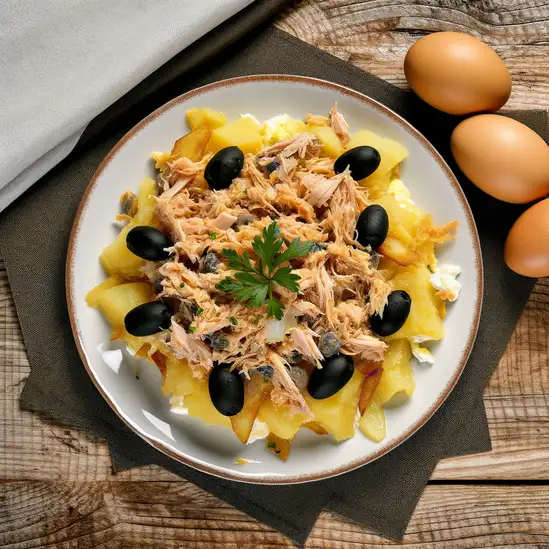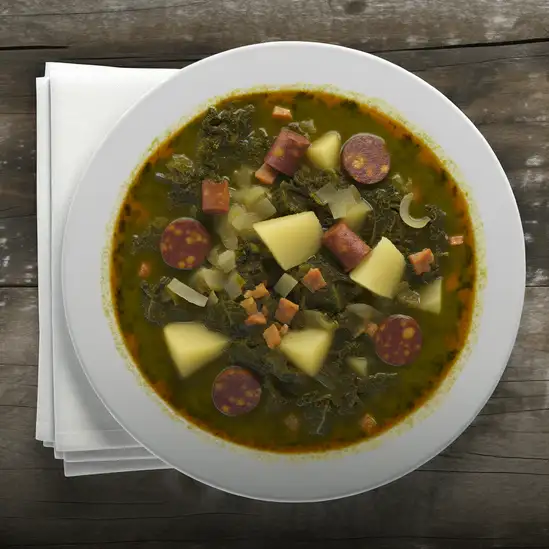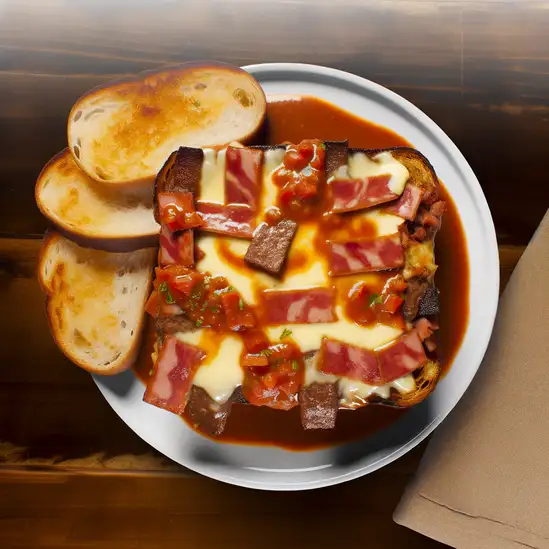



If you ever find yourself craving a place where the Atlantic breeze mingles effortlessly with old-world charm,Viana do Castelo is where you want to be. The moment you step into this coastal city,there’s a gentle hum of life—fishermen unloading their catch,the distant call of seagulls,and the soft clatter of cobblestones underfoot. It’s a place that feels both lively and laid-back,where history whispers from every corner but never overwhelms. Wandering through the narrow streets,you’ll catch the scent of fresh seafood grilling nearby,mingling with the salty air and the faint aroma of pine from the surrounding hills. The city’s architecture is a delightful mix of Manueline and Art Nouveau styles,with colorful tiled facades that seem to tell stories of centuries past. Climbing up to the Sanctuary of Santa Luzia rewards you with sweeping views of the river meeting the sea—a breathtaking panorama that feels like a secret shared just with you. What really makes Viana do Castelo stand out is its vibrant culture. The locals wear their traditions proudly,especially during festivals when folk music fills the air and women don intricate embroidered costumes. And don’t miss tasting the local delicacy,arroz de sarrabulho—a rich,hearty rice dish that perfectly captures the region’s rustic soul. Visiting here isn’t just about seeing a place; it’s about feeling the pulse of a community that embraces both its past and its present with warmth and pride.
The information on this page is currently being reviewed by Tripkliq and should be used as a guide only
Eng word: Hello
Eng pronunciation: Oh-lah
Local language: Olá
Eng word: Goodbye
Eng pronunciation: Ah-deh-oosh
Local language: Adeus
Eng word: Thank you
Eng pronunciation: Oh-bree-gah-doo
Local language: Obrigado
Eng word: How much
Eng pronunciation: Kwahn-too koos-tah
Local language: Quanto custa
Eng word: Toilet
Eng pronunciation: Bahn-yay-roo
Local language: Banheiro
Eng word: Help me
Eng pronunciation: Ah-zhoo-dee mee
Local language: Ajude-me
Eng word: Yes
Eng pronunciation: Seem
Local language: Sim
Eng word: No
Eng pronunciation: Now
Local language: Não
Eng word: Excuse me
Eng pronunciation: Kohm lee-sen-sah
Local language: Com licença
Viana do Castelo was officially founded in 1258 by King Afonso III of Portugal, who granted it a charter, marking the beginning of its development as a significant port city.
During the Age of Discoveries, Viana do Castelo played a crucial role as a shipbuilding center, contributing to Portugal's maritime exploration and the construction of caravels used in global expeditions.
The iconic Sanctuary of Santa Luzia, built in the early 20th century, is a stunning basilica that offers breathtaking panoramic views of the city and the Lima River.
The Gil Eannes, a hospital ship built in Viana do Castelo in 1955, served Portuguese cod-fishing fleets in the North Atlantic and is now a museum showcasing maritime history.
Viana do Castelo is renowned for its intricate gold filigree jewelry, a traditional craft that reflects the city's rich cultural heritage and artistic craftsmanship.
The Church of São Domingos, dating back to the 13th century, is a fine example of Romanesque architecture and a testament to the city's medieval history.
The Eiffel Bridge, designed by Gustave Eiffel (of Eiffel Tower fame), was inaugurated in 1878 and remains an engineering marvel connecting the city across the Lima River.
The Pilgrimage of Nossa Senhora da Agonia, held annually in August, is one of Portugal's most famous festivals, celebrating the city's maritime traditions with parades, music, and traditional costumes.
The Renaissance Fountain in the Republic Square, built in the 16th century, is a beautiful example of Renaissance art and a central landmark in the city's historic center.
In Viana do Castelo, the most common Power Adaptor is Type C, Type F.



A popular codfish dish made with shredded cod, onions, and thinly sliced fried potatoes, bound together with scrambled eggs and garnished with black olives and parsley.

A comforting soup made with kale, potatoes, onions, and chorizo, often enjoyed as a starter or light meal.

A hearty sandwich originating from Porto, filled with layers of cured meats, sausage, and steak, topped with melted cheese and a rich tomato and beer sauce.

A traditional rice dish made with pork, blood, and spices, often served with pieces of meat and sometimes accompanied by a side of greens.

A traditional Portuguese sponge cake, light and fluffy, often enjoyed as a dessert or with coffee, sometimes filled with sweet cream or fruit.

Grilled octopus drizzled with olive oil and served with roasted potatoes, a simple yet flavorful dish that highlights the freshness of the seafood.
Imagine stepping into a city where every corner hums with a quiet,soulful energy—that’s Porto. It’s a place where the old world meets a lively,modern pulse,wrapped in the warm glow of terracotta rooftops and the shimmering Douro River. Walking through its narrow,cobbled streets,you’ll catch the scent of freshly baked pastéis de nata mingling with the salty breeze from the Atlantic. The city feels alive but unhurried,like it’s inviting you to slow down and savor each moment.
Porto’s character is deeply rooted in its history,yet it’s effortlessly cool. You’ll find colorful azulejo tiles telling stories on building facades,while locals chat animatedly over glasses of rich,ruby-red port wine in cozy,tucked-away taverns. The sound of Fado music drifts softly from a nearby café,adding a layer of melancholy beauty to the evening air. It’s a city that wears its heart on its sleeve—warm,genuine,and a little bit mysterious.
What really makes Porto stick with you is how it tastes and feels. From the first sip of a perfectly chilled glass of Vinho Verde to the crunch of a francesinha sandwich packed with layers of flavor,the city’s culinary scene is a delicious adventure. And when you climb up to the Dom Luís I Bridge at sunset,watching the city light up like a living painting,you realize Porto isn’t just a place to visit—it’s a place to feel alive.
Lisbon feels like a city that’s been gently kissed by the sun and the sea,where every street corner hums with life and stories. Imagine wandering through narrow,cobbled alleys lined with pastel-colored buildings,their azulejo tiles catching the light just right. The air carries a mix of salty ocean breeze and the rich aroma of freshly baked pastéis de nata—those flaky custard tarts you’ll find in every bakery. There’s a rhythm here,a kind of laid-back energy that invites you to slow down and soak it all in.
You’ll hear the soulful strains of fado music drifting from cozy taverns,a haunting soundtrack that feels like the city’s heartbeat. Locals chat animatedly over glasses of vinho verde or ginjinha,a cherry liqueur that’s as sweet as the conversations. The city’s hills offer stunning views where terracotta rooftops spill down toward the Tagus River,and the sunlight shimmers on the water like a thousand tiny mirrors.
Lisbon’s charm lies in its blend of old and new—ancient trams clatter past sleek street art,and centuries-old castles overlook buzzing markets filled with fresh seafood and vibrant produce. It’s a place where history and modern life dance together effortlessly,inviting you to explore,taste,and feel its unique pulse. Trust me,once you’ve wandered through its neighborhoods and tasted its flavors,Lisbon stays with you long after you leave.
Imagine stepping into a place where the ocean breeze carries the scent of blooming jacarandas and the distant hum of traditional Portuguese guitars fills the air—that’s Funchal for you. This city feels like a warm embrace,perched on the lush,rugged coastline of Madeira. Walking through its cobbled streets,you’ll notice vibrant markets bursting with fresh tropical fruits and the rich aroma of freshly baked bolo do caco bread. The colors here are alive:from the deep blue Atlantic stretching endlessly to the bright bougainvillea cascading down old stone walls.
Funchal’s charm lies in its blend of old-world grace and lively,modern spirit. Locals chat animatedly over glasses of Madeira wine in cozy tavernas,while street art peeks out from unexpected corners,telling stories of the island’s history and culture. The city pulses gently with a relaxed rhythm—you can feel it in the slow,deliberate pace of life and the genuine smiles of the people you meet.
Don’t miss the chance to ride the cable car up to Monte,where the views make your breath catch,or to wander through the botanical gardens,where exotic plants and butterflies create a quiet sanctuary. And when night falls,the harbor lights twinkle like stars,inviting you to savor fresh seafood paired with that sweet,fortified wine Madeira is famous for. Funchal isn’t just a destination; it’s a feeling you carry with you long after you leave.
If you ever find yourself dreaming of a place where the ocean breeze carries the scent of salt and blooming hydrangeas,Ponta Delgada is that kind of spot. It’s the lively heart of São Miguel Island in the Azores,and the moment you step into its cobbled streets,you feel this warm,welcoming pulse—like the city itself is breathing with you. The colorful buildings,with their intricate stonework and bright shutters,seem to tell stories of centuries past,while locals chat animatedly over coffee in cozy cafés that spill out onto sun-dappled squares.
Walking along the marina,you’ll hear the gentle slap of waves against boats and the distant call of seagulls,mingling with the laughter of children playing nearby. The air is fresh,tinged with the promise of adventure,whether you’re about to explore volcanic craters or dive into a plate of freshly caught seafood. Speaking of food,don’t miss trying the local cozido—a stew slow-cooked underground by volcanic heat,rich with flavors that feel like a warm hug on a cool day.
What really makes Ponta Delgada special is its blend of old-world charm and vibrant island life. There’s a relaxed rhythm here,where time slows just enough for you to savor a glass of local wine while watching the sun dip behind the hills. It’s a place that invites you to linger,to explore,and to fall a little in love with the simple,beautiful moments that make travel unforgettable.
Barcelona feels like a vibrant mosaic where every corner pulses with life and color. The moment you step onto its sun-drenched streets,you’re wrapped in a warm Mediterranean embrace—salt in the air,the distant hum of waves mingling with lively chatter from bustling cafés. The city’s energy is contagious,a blend of old-world charm and modern creativity that invites you to slow down and savor each moment.
Wandering through the narrow alleys of the Gothic Quarter,you’ll hear the soft clinking of glasses and the melodic strum of a street guitarist,while the scent of fresh-baked bread and roasting coffee drifts from cozy bakeries. Barcelona’s architecture is like a living art gallery—Gaudí’s whimsical buildings,with their undulating lines and vibrant mosaics,feel almost dreamlike against the bright blue sky. It’s a place where history and imagination dance together.
Food here is a celebration in itself. Imagine biting into a perfectly crispy,golden croqueta or savoring the rich,smoky flavors of a traditional paella,all washed down with a glass of chilled cava. The city’s markets,like La Boqueria,burst with colors and aromas—ripe tomatoes,fresh seafood,and fragrant herbs—that make you want to taste everything.
What makes Barcelona truly special is its spirit:a city that lives passionately,where locals and visitors alike gather to share stories,laughter,and the simple joy of being in a place that feels both timeless and alive. Trust me,once you’ve experienced it,you’ll carry a piece of Barcelona’s magic with you long after you leave.
Valencia feels like a sun-drenched embrace the moment you step into its lively streets. There’s this effortless blend of old-world charm and modern energy that makes you want to slow down and soak it all in. Imagine wandering through narrow alleys where the scent of fresh oranges mingles with salty sea air,while the distant hum of lively chatter and clinking glasses spills out from cozy tapas bars. The city pulses with life,but it’s never overwhelming—more like a warm invitation to explore at your own pace.
What really sets Valencia apart is its vibrant culture and the way it celebrates food and community. You can’t visit without tasting authentic paella right where it was born,the saffron-infused rice bursting with fresh seafood or tender chicken,paired with a glass of chilled local wine. The Mercado Central is a feast for the senses,overflowing with colorful produce,fragrant spices,and the friendly banter of vendors who clearly love their craft.
Beyond the city’s historic heart,the futuristic City of Arts and Sciences offers a striking contrast—gleaming white structures that look like they belong in a sci-fi movie,surrounded by tranquil water reflecting the sky. And when you need a break,the Turia Gardens stretch out like a green ribbon,perfect for a bike ride or a lazy afternoon picnic. Valencia isn’t just a place to visit; it’s a place to feel alive,where every corner invites you to discover something new and deliciously unexpected.
Street vendors may sell fake branded items, such as watches, bags, or sunglasses, claiming they are authentic and offering them at 'discounted' prices.
Scammers may approach tourists pretending to collect donations for a local charity or cause. They often use emotional stories to pressure tourists into giving money.
Unlicensed individuals may pose as tour guides, offering subpar or inaccurate tours while charging high fees.
Some taxi drivers may take advantage of tourists by overcharging or taking unnecessarily long routes to increase the fare.
In crowded areas, pickpockets may target tourists, especially those who are distracted or carrying valuables in easy-to-reach places.
Some restaurants may add extra items or inflate prices on the bill, assuming tourists won't notice or question the charges.
Street performers may invite tourists to participate in their act and then demand an unexpectedly high 'tip' afterward.
Portugal has decriminalized the possession of small amounts of drugs for personal use, including cannabis. However, this does not mean drugs are legal. Possession of drugs may result in a fine or referral to a rehabilitation program. Selling, trafficking, or possessing large quantities of drugs remains a criminal offense. Tourists should avoid drug use in public spaces and be aware of the legal distinctions between decriminalization and legalization.
In Viana do Castelo, as in the rest of Portugal, smoking is prohibited in enclosed public spaces, workplaces, public transportation, and certain outdoor areas such as near schools, hospitals, and playgrounds. Designated smoking areas may be available in some establishments. Tourists should look for signage indicating smoking restrictions and adhere to local rules.
Vaping is subject to similar regulations as smoking in Portugal. It is prohibited in enclosed public spaces, workplaces, and public transportation. Some outdoor areas, such as those near schools and healthcare facilities, may also restrict vaping. Tourists should be mindful of posted signs and avoid vaping in restricted areas.
What are other people saying about Viana do Castelo?
Recent Social posts about Viana do Castelo
There is nothing to show you for now.